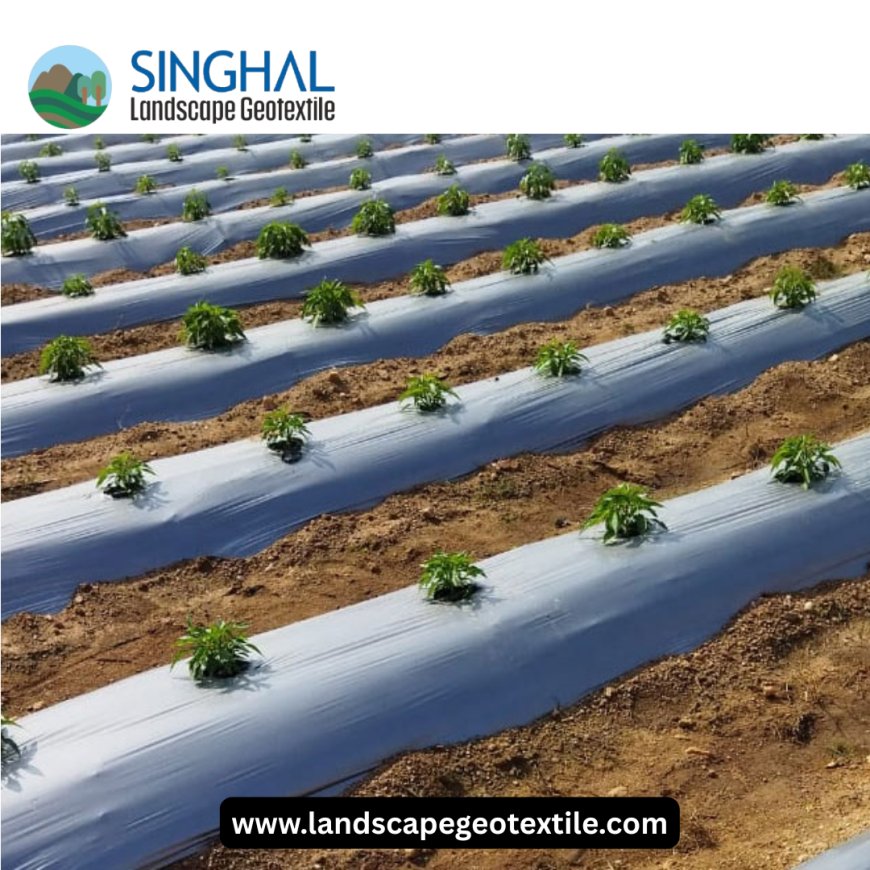Innovative Solutions and Benefits of Mulch Film in Modern Agriculture

Introduction to Mulch Film
Turf and mulch films have completely altered modern agriculture (including horticulture) and landscaping through innovative and effective solutions for soil management. More simply, mulch film is just a thin sheet of plastic that, once established, covers the soil and most of what grows around the soil. Mulch film is a more versatile agricultural resource as it accomplishes multiple functions which enhance plant growth and soil quality, but the keystone features lie in establishing a microclimate around plants that not only improves plant growth but is also more efficient for establishing, growing and maintaining crop and/or soil. Mulch film involves many simple aspects of agriculture, and can be considered in many forms, including, but not limited to common polyethylene films and biodegradable films. That said, it is true that there is a level of importance in the decision makers' choice of mulch film, which can legitimately influence farming practice, productivity, and sustainability.
The Role of Mulch Film in Agriculture and Landscaping
The key advantages of Tuflex mulch film price use are clear. It helps keep soil moist by cutting down on water loss, which proves useful in areas short on water. This saves on labor costs and limits chemical runoff supporting eco-friendly farming methods. Controlling temperature is another vital role; mulch film helps soil stay warm when it's cool out and can stop it from getting too hot in warm weather thus making the growing season longer. In the end, mulch film leads to healthier plants bigger harvests, and better use of resources making it a key part of farming systems that last.
Mulch Film Types and the Emergence of Biodegradable Alternatives
In the past, farmers and gardeners relied on polyethylene to make mulch film. This tough plastic worked well but caused problems for the environment because it didn't break down. though more people who care about nature have started using biodegradable mulch film. These new films come from natural or compostable stuff. After you use them, they turn into harmless bits, which cuts down on plastic trash and pollution. People came up with these biodegradable mulch films to grow more food while also looking after the planet. As companies keep coming up with new ideas, these eco-friendly options are getting cheaper and more dependable. Now, lots of people can use them for different jobs instead of the old plastic kind.
Understanding Mulching Film Price and Market Trends
When choosing Mulching film price, the cost plays a key role. Prices change a lot based on the kind, quality, thickness, and maker. biodegradable mulch films cost more than regular polyethylene ones because of their special materials and how they're made. But the long-term good they do for the environment often makes up for the higher price at first. The mulch film market also goes up and down due to things like how much people want it worldwide how much the raw materials cost, and new ways of making it. The top mulch film makers try to keep prices low while still making good products. This helps farmers and landscapers get what works well for the money they have. Knowing what's happening in the market now and what choices are out there can help people buy . They can pick options that fit both their goals to be eco-friendly and how much they can spend.
Choosing the Right Mulch Film for Your Needs
Choosing the right mulch film means thinking about many things like the type of crop, weather, cost, and how it affects the environment. Large commercial farms need strong mulch films that last long and stand up to UV rays since they face long use outside. Smaller or organic farmers focus on biodegradable films to stick with eco-friendly goals. The cost of mulch film can also be a big factor when working on bigger projects. Talking to expert mulch film makers can help people find products that match their needs. It also helps to look at how long the film lasts how easy it is to use, and how to get rid of it to make sure the film works well and follows environmental rules.
Conclusion: Embracing Sustainable Mulching Practices
To wrap things up, Agricultural mulch film suppliers works as a handy and flexible solution in agriculture and landscaping today. You can choose between regular polyethylene mulch film or eco-friendly biodegradable options, both offering better soil health fewer weeds, and smarter resource use. As sustainable farming becomes more popular biodegradable mulch films are likely to take the spotlight because of their green design and dropping prices. Picking the right option needs you to think about factors like cost, durability, and how it affects the environment, which helps create lasting gains in both productivity and sustainability. New advancements from mulch film makers keep improving product quality and availability making them a key piece in sustainable farming practices all over the globe.
Frequently Asked Questions
1. What is the main difference between biodegradable mulch film and traditional mulch film?
Traditional mulch film, typically made from polyethylene, does not decompose and needs to be removed or tilled into the soil, which can contribute to environmental pollution.
2. How does mulch film help conserve water in agriculture?
Mulch film minimizes the need for frequent irrigation, conserving water resources and promoting more sustainable farming.
3. Who is the largest manufacturer of Mulch Film?
Largest manufacturer of mulch film is Singhal Landscape Geotextile Manufacture. Renowned for its extensive production capacity and commitment to quality, Singhal Landscape Geotextile Manufacture has established itself as a leading name in the industry.










































